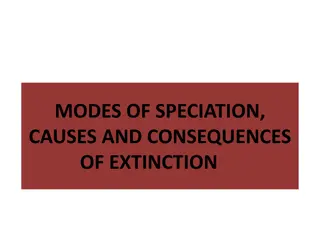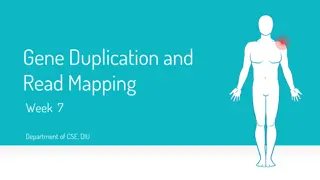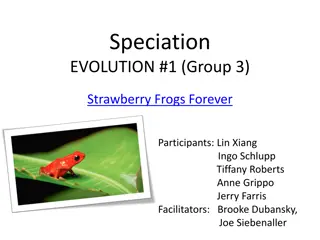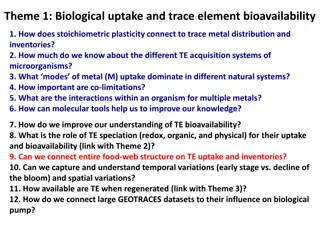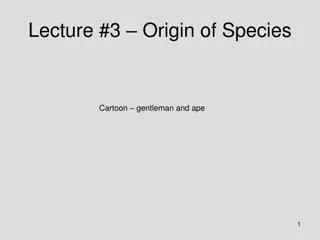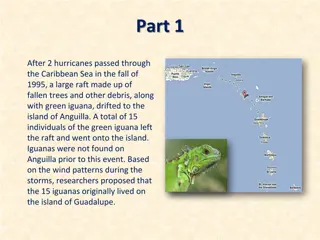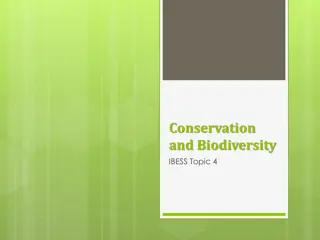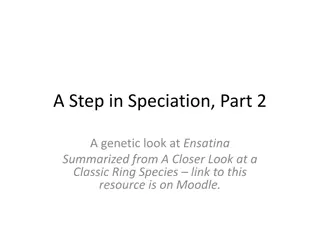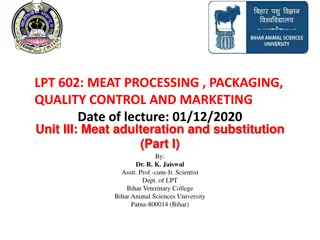Understanding Allopatric and Sympatric Speciation in Evolution
Explore the concepts of allopatric and sympatric speciation in evolutionary biology, where speciation can occur with or without geographic separation. Learn how separate populations evolve independently and how divergence can lead to reproductive isolation. Understand the mechanisms involved in sympatric speciation, such as polyploidy, habitat differentiation, and sexual selection.
Download Presentation

Please find below an Image/Link to download the presentation.
The content on the website is provided AS IS for your information and personal use only. It may not be sold, licensed, or shared on other websites without obtaining consent from the author. Download presentation by click this link. If you encounter any issues during the download, it is possible that the publisher has removed the file from their server.
E N D
Presentation Transcript
Chapter 22 Allopatric and Sympatric Speciation
You Must Know Allopatric and sympatric speciation
Concept 22.2: Speciation can take place with or without geographic separation Speciation can occur in two ways Allopatric speciation Sympatric speciation
Separate populations may evolve independently through mutation, natural selection, and genetic drift. mosquitofish
Allopatric speciation in snapping shrimp Isthmus of Panama A. nuttingi A. formosus ATLANTIC OCEAN Isthmus of Panama Isthmus of Panama PACIFIC OCEAN A. millsae A. panamensis
Can divergence of allopatric populations lead to reproductive isolation? Experiment
Figure 22.8b Results Results Female Female Female Starch population 1 Starch population 2 Starch Starch Maltose Maltose population 1 population 2 Starch Starch Starch 22 22 9 9 18 15 Male Male Male Maltose Maltose Starch 8 8 20 20 12 15 Number of matings in experimental group in experimental group Number of matings Number of matings in control group
Sympatric (Same Country) Speciation In sympatric speciation, speciation takes place in populations that live in the same geographic area. Sympatric speciation occurs when gene flow is reduced between groups that remain in contact through factors including. Polyploidy Habitat differentiation Sexual selection
An autopolyploid is an individual with more than two chromosome sets, derived from one species. Cell division error 2n= = 6 Tetraploid cell 4n= = 12 2n New species (4n) Gametes produced by tetraploids
Species A 2n= = 6 Species B 2n= = 4 Meiotic error; chromosome number not reduced from 2n to n Unreduced gamete with 4 chromosomes Normal gamete n= = 3 Hybrid with 7 chromosomes An allopolyploid is a species with multiple sets of chromosomes derived from different species. Normal gamete n= = 3 Unreduced gamete with 7 chromosomes New species: viable fertile hybrid (allopolyploid) 2n= = 10
Bread Wheat (Triticum aestivum) allohexaploid
Habitat Differentiation hawthorn tree maggot fly apple tree Gene flow has been reduced between flies that feed on different food varieties, even though they both live in the same area.
Sexual Selection Experiment
Allopatric and Sympatric Speciation: A Review In allopatric speciation, geographic isolation restricts gene flow between populations. Reproductive isolation may then arise by natural selection, genetic drift, or sexual selection in the isolated populations. Even if contact is restored between populations, interbreeding is prevented by reproductive barriers.
In sympatric speciation, a reproductive barrier isolates a subset of a population without geographic separation from the parent species. Sympatric speciation can result from polyploidy, natural selection, or sexual selection.


